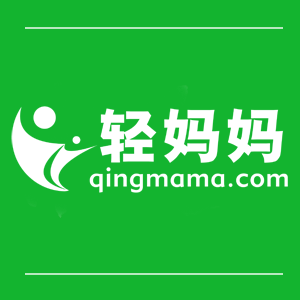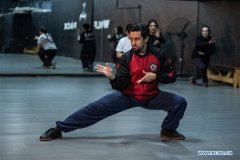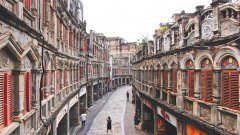Feature: From Chinatown to Midtown: Chinese New Year fanfare gets rolling in "Big Apple"
By Xinhua writer Wang Fan
NEW YORK, Feb. 11 (Xinhua) -- On a wintry morning in New York, traditional lion dancers and a classic Chinese dragon made their way from Manhattan's Chinatown to the Upper East Side, then down Madison Avenue, before arriving at East Midtown where families with children were lining up the streets, ready to embrace the Chinese Lunar New Year -- the Spring Festival.
In the Big Apple known as the "melting pot", a spate of festive activities from the Chinese New Year Concert by famed New York Philharmonic to a spectacular fireworks display on the Hudson River, to an Empire State Building light show, were held at iconic venues across the city and saw a broad participation of local communities.
On Saturday, a flash mob featuring 100 monkey performers broke loose at Times Square, to the cheers and excitement of passers-by, while a video introducing the Year of Monkey was aired at the "Crossroads of the World."
"The celebration of Chinese Lunar New Year is no longer a purely Chinese event but an occasion that celebrates the diverse cultures that make up our communities today," said Shirley Young, chair of U.S.-China Cultural Institute.
With so much fun in the air, it might be hard to imagine a time when Lunar New Year celebrations had been forbidden in the city.
Michael Perrone, in his Belleville Times column, wrote: "There was at the time (around 1870) a very strong anti-Chinese sentiment in the country, backed by state and federal laws restricting the immigration, employment and rights of the Chinese. For example, it was illegal for the Chinese to gather publicly in large groups in New York City."
Therefore, many Chinese of the New York area had to travel to the New Jersey town of Belleville, home to the first Chinese immigrants in the east coast, to celebrate the Lunar New Year.
Thanks to the efforts of the ever growing Chinese communities, the Spring Festival celebrations on the east coast of the U.S., which took shape from a small scale festivity in the Jersey town of Belleville, are no long confined to Chinatown, but extended to the main streets of the city, making ever bigger splashes every year.
In New York City, 2016 is the first year when the Chinese New Year was added to the city's public school calendar, allowing 1.1 million school students to have one day off celebrating the traditional Chinese holiday.
"I think that by giving recognition to this, it actually shows that we are giving respect to the culture diversity of this country, and also, giving the recognition to the great contributions the Chinese-American community made to this society," said Consul General Ambassador Zhang Qiyue.
Meanwhile, at the annual Lunar New Year concert of New York Philharmonic on Tuesday, UN chief Ban Ki-moon took the stage and wished the audience Happy New Year in Chinese.
"It sets a precedent in the history of New York Philharmonic. No guest was invited before to deliver a speech in their concert," said Zhou Wei, founder of the New York-based Weiber consulting company and one of the organizers of the event.
Ban's five-minute speech, not on the official schedule, indicated the growing importance of the Chinese New Year in the world, she added.
Adding to the festivity, Twitter released its first-ever Chinese New Year emoji in a move to become the leading social platform for celebrations.
The hongbao, or red envelope used for gift giving, appeared on tweets containing special hashtags, including #KungHeiFatChoy, #HappyCNY and #GongXiFaCai.
And on Monday, the first day of the Chinese Year of the Monkey, New York Mayor Bill de Blasio said in a written statement that "The Lunar New Year has long been one of the city's most treasured traditions."
This year, U.S.-China Cultural Institute co-chaired a five-day festival dubbed "Year of the Monkey Celebration" to mark the Lunar New Year holiday in partnership with the China Central Academy of Fine Arts, the Nature Conservancy, New York Philharmonic, and other culture entities.
"We are trying to bring both Chinese and people of all ethnic backgrounds together in New York through art, education and the conservation of nature," said Chair Young.
To most New Yorkers, the events are a welcome effort to know more about the Chinese culture.
Poring over a large installation made from over 1,000 dance shoes at an exhibition held at Javits Center North Saturday, Havi Rampersaud, a Bronx resident, said "I think the art piece is super cool. There should be more events like this."
The exhibition will help break the stereotype of the Chinese culture that had been deeply set in people's minds, and add a fresh, modern dimension to its understanding, she added.
A quick tour around the exhibition that showcased contemporary Chinese art, including delicate handcraft, fine costume, painting, public art pieces, and creative photography, one may easily get the feel of how Chinese art charms the Chinese and westerners alike.
"I started to take notice of Chinese contemporary art about two years ago after visiting several universities in Beijing," Ellen Fisher, dean of New York School of Interior Design, told Xinhua.
Noting a shift in today's China art, she said: "I think Chinese, especially Chinese young people, are very sophisticated" as they can think things from a global perspective rather than the parochial view.
Recent years, especially after 2008, have seen an increase in both quantity and quality of cultural programs coming into the United States, said Zhou, who has been working to bring in Chinese cultural events into the world's largest economy.
Exposure to the Western culture gives young Chinese artists an advantage in resonating with their western audience, she said.
Meanwhile, observers said, China's rise on the world stage also helps extend the global reach of the Chinese New Year festival.
Addressing the crowds ahead of a fabulous fireworks over the Hudson River which drew thousands of people to the pier, Consul General Ambassador Zhang said: "It (The celebration) is a reflection of the dynamic growth of our bilateral relations."
"The China-U.S. relationship has become one of the most important bilateral relations in the world. China is also already the largest trading partner of the United States," Zhang said.
According to the Chinese Academy of Social Sciences, up to 35 million people of Chinese origin now live overseas, making it the largest migrant group in the world. In New York City, Chinese immigrants are now the second largest foreign-born group and soon to overtake Dominicans for the top spot.















